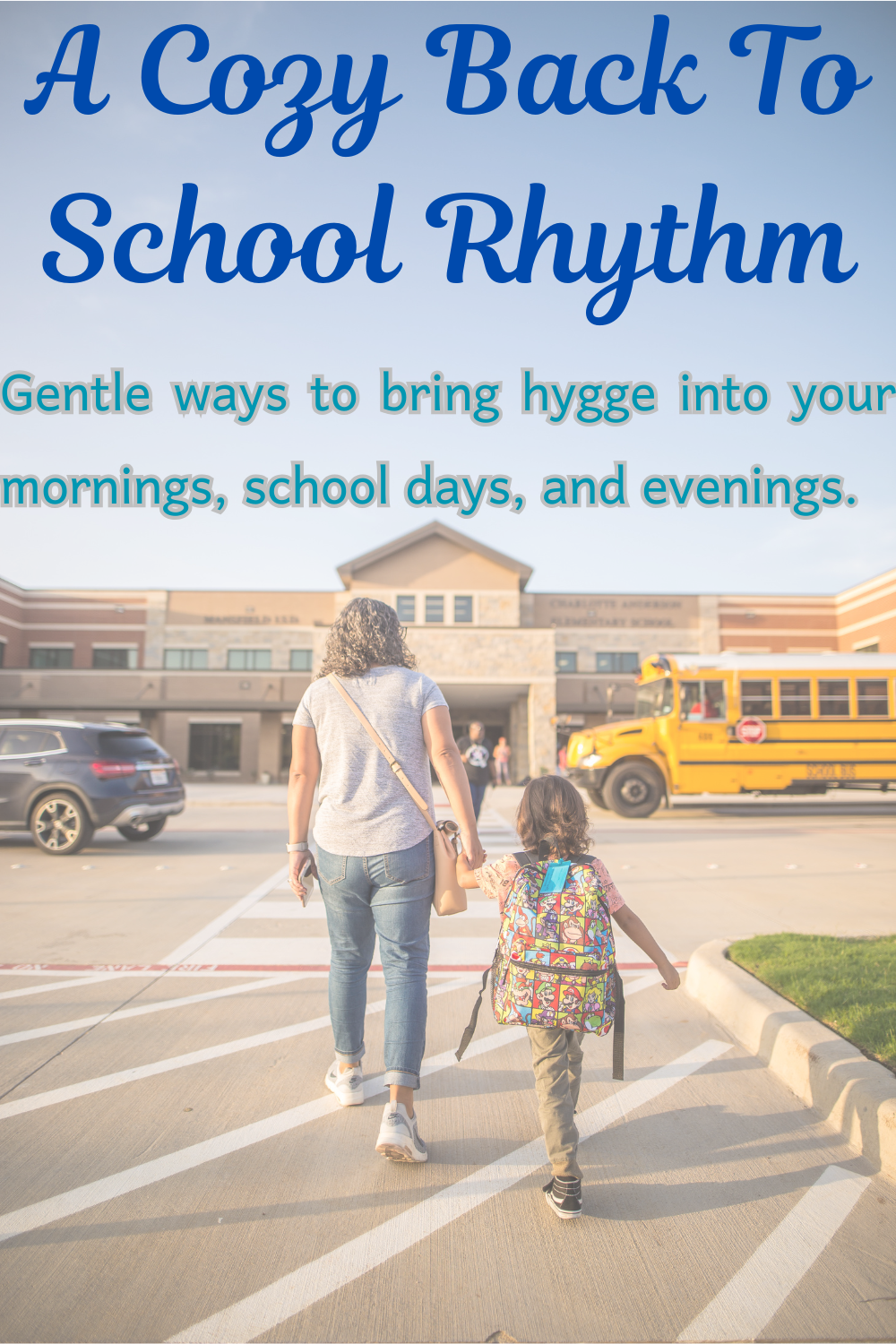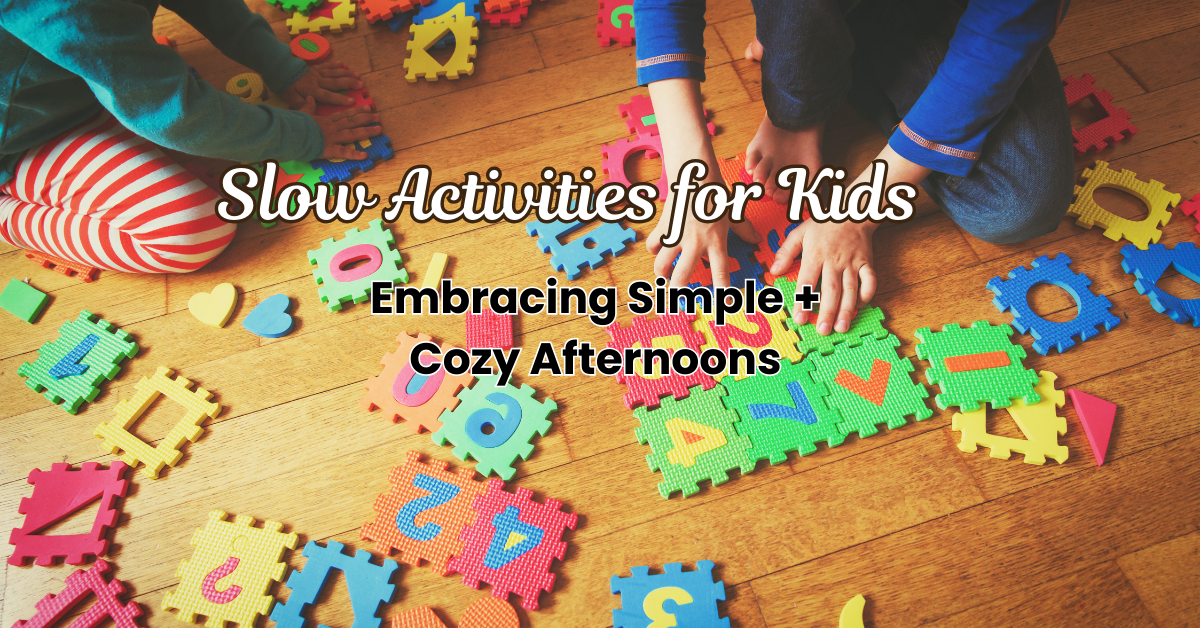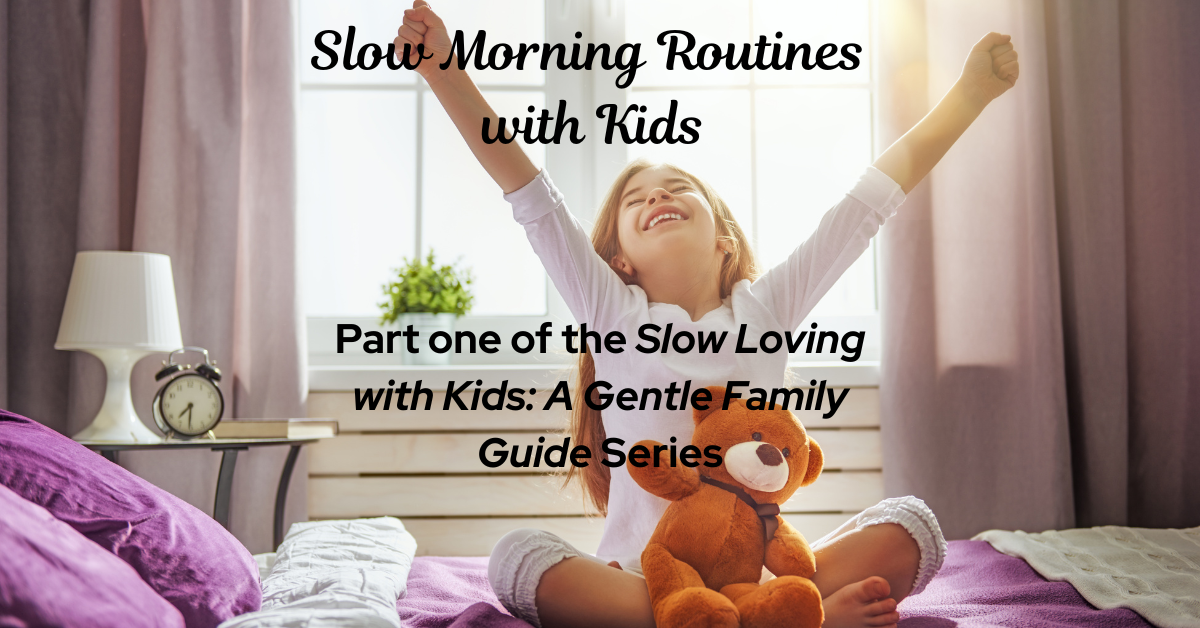Gentle ways to bring hygge into your back-to-school rhythm.
This post may contain affiliate links, which means I may earn a small commission if you choose to make a purchase—at no extra cost to you. I only share products I truly love and believe will add value to your life. Thank you for supporting this cozy corner of the internet!
The first days of a new school year always feel like a big exhale—and a big inhale all at once.
There’s excitement, of course. Fresh notebooks. Sharpened pencils. That hopeful back-to-school energy. But there’s also the return of early mornings, packed lunches, school shoes that suddenly don’t fit, and kids who seem to need seventeen different snacks before 9 a.m.
It’s a lot.
And in the middle of that whirlwind, I’ve found myself craving something softer. A rhythm that holds our days with a little more calm and a little less chaos.
So instead of launching into a rigid schedule or trying to “optimize” our mornings, we’ve started building what I call a hygge-inspired school routine. A simple, cozy back-to-school rhythm that grounds us during the back-to-school transition. It’s not perfect. But it’s peaceful. And that’s enough.
If you’re feeling the tug to create something more intentional for your school days—something that feels doable even when mornings are hectic and the laundry isn’t folded—this post is for you.
Here’s how we’re approaching back-to-school rhythms with intention, coziness, and care.
Why Rhythm > Routine
Before we dive in, let’s talk language.
I use the word rhythm more than routine because it feels gentler. More human. A routine is something you stick to no matter what; a rhythm is something you return to when you’ve drifted. It’s flexible, forgiving, and focused on flow rather than control.
And especially with young kids (and tired parents), a rhythm helps everyone feel more held and less hurried.
Morning: Starting with Calm
Our Goal: Begin the day with warmth, connection, and just enough structure to keep things flowing.
1. Wake-Up Ritual (Not Just a Wake-Up Call)
Instead of launching straight into “get dressed, brush your teeth, let’s GO,” try a soft start.
Ideas:
- Wake kids up with gentle light or soft music
- Offer a morning cuddle or back rub before they get out of bed
- Light a candle while they eat breakfast—it’s a small thing, but it sets a tone of peace
Even 10 extra minutes of calm can shift the whole trajectory of the day.
2. Keep Breakfast Simple + Familiar
We rotate a short list of nourishing, low-effort breakfasts:
- Oatmeal
- Scrambled eggs and toast
- Yogurt and granola
- Peanut butter banana toast
Due to my work schedule (I have to be there at 7) I never get to eat breakfast with my kids. My hubby does a great job of getting them fed and letting them connect and have a slow morning before he drops them off for the day.
Pro tip: If your kids are slow eaters or get distracted easily, a timer with a gentle chime can help keep things moving without feeling stressful.
3. The “Ready Basket” by the Door
We keep a small basket near the door with:
- Hairbrush + detangler spray
- Sunscreen stick
- Tissues
- An extra pair of socks
- A checklist with 3-4 “Ready to Go?” items (we use pictures for non-readers)
This helps eliminate the last-minute scramble for shoes or water bottles—and gives the kids a sense of autonomy.
After School: Gentle Landing, Not a Crash
Our Goal: Create a buffer between the outside world and home—a space to exhale, reconnect, and reset.
4. After-School Tea Time (or Snack Time with a Twist)
This is one of my favorite parts of our day. As soon as we get home, I set out a snack, pour something warm (or cold, if it’s hot out), and sit with the kids—even just for 10–15 minutes.
Sometimes we:
- Light a candle
- Play a quiet instrumental playlist
- Talk about the best and worst parts of the day
- Read a short picture book together – my son’s current obsession is these I Spy books.
It’s not a reward or a bribe—it’s a ritual. A pause. A soft landing after a structured day.
5. Built-In Decompression Time
Before homework, chores, or any other “must-dos,” we offer 20–30 minutes of free play or quiet time. No screens, no structured activity—just freedom to unwind.
Kids might:
- Play outside
- Do watercolors at the table
- Build something with blocks
- Curl up with books or blankets
This helps them release any bottled-up energy or emotion before transitioning into the next part of the day.
Evenings: A Soft Close
Our Goal: Make space for reconnection, reflection, and rest.
6. Simple Dinners + One Candle on the Table
Weeknight meals don’t need to be impressive. Often, ours are super simple:
- Soup and bread
- Quesadillas with veggies on the side
- Pasta + frozen peas + parmesan
But what makes dinner feel intentional is how we set the mood:
- We light one candle on the table
- We play soft music
- We say something we’re thankful for before we eat
These little rituals turn even a leftover night into something sweet.
7. Evening Reset Basket
After dinner, we do a 5–10 minute family reset:
- Everyone helps tidy (yes, even the littlest ones—make it playful!)
- We use a basket to gather random items that go “upstairs” or to bedrooms
- Sometimes we set a timer and race the clock
This helps transition from dinner chaos to bedtime calm, and keeps clutter from building up all week.
Bedtime: Slow and Steady
Our Goal: Let the day end with comfort and connection—not resistance.
8. The “3 S’s” Bedtime Rhythm
We keep our bedtime rhythm extra simple:
- Soak – Bath or warm cloth wipe-down
- Story – Always, always read together
- Snuggle – In bed with dim lights, soft voices, and time to chat or sing
If our evening has been especially busy or cranky, I try to include one “extra” act of connection:
- A longer cuddle
- A hand massage with lotion
- Whispering three things I love about them
- Letting them “tell me a story” while I just listen
These quiet rituals become the heartbeat of our days.
A Few Final Thoughts
Building an intentional back-to-school rhythm doesn’t mean controlling your days—it means anchoring them. It’s about creating soft, repeatable moments that help your family feel safe, seen, and settled—even in the middle of a busy season.
It won’t be perfect. Some mornings will still feel rushed. Some evenings will still end in meltdowns. That’s okay.
Because when your days are rooted in love and lit with little rituals, your kids feel it—even if they don’t have the words to say it.
So light the candle. Pack the snack. Pour the cocoa. Tuck them in with a slow breath and a whispered prayer.
This is the season for coziness and connection—and it begins, as always, at home.
After a busy school week, the weekends are the ideal time to really slow down, reset, and reconnect. Read my post on The Art of the Slow Weekend for ideas on how to do just that.
Your Turn:
What helps you ease back into the school rhythm? Do you have any cozy rituals for mornings or evenings? I’d love to hear—share in the comments or tag me on Instagram so we can gather a little more peace together.






I may not be in that season anymore, but I really enjoy reading about routines like this. It’s such a gentle and thoughtful way to approach the back-to-school chaos. I love the idea of bringing in more calm instead of chasing perfection.
This is such a helpful post. Framing back-to-school as an opportunity to establish gentle, cozy routines that make mornings feel calmer is brilliant. The idea of keeping things simple but meaningful is something I’m embracing in all parts of my life now.
I love this! Routines are so important for our family!